11 Health Benefits of Bakasana (Crane Pose) & Steps to Perform
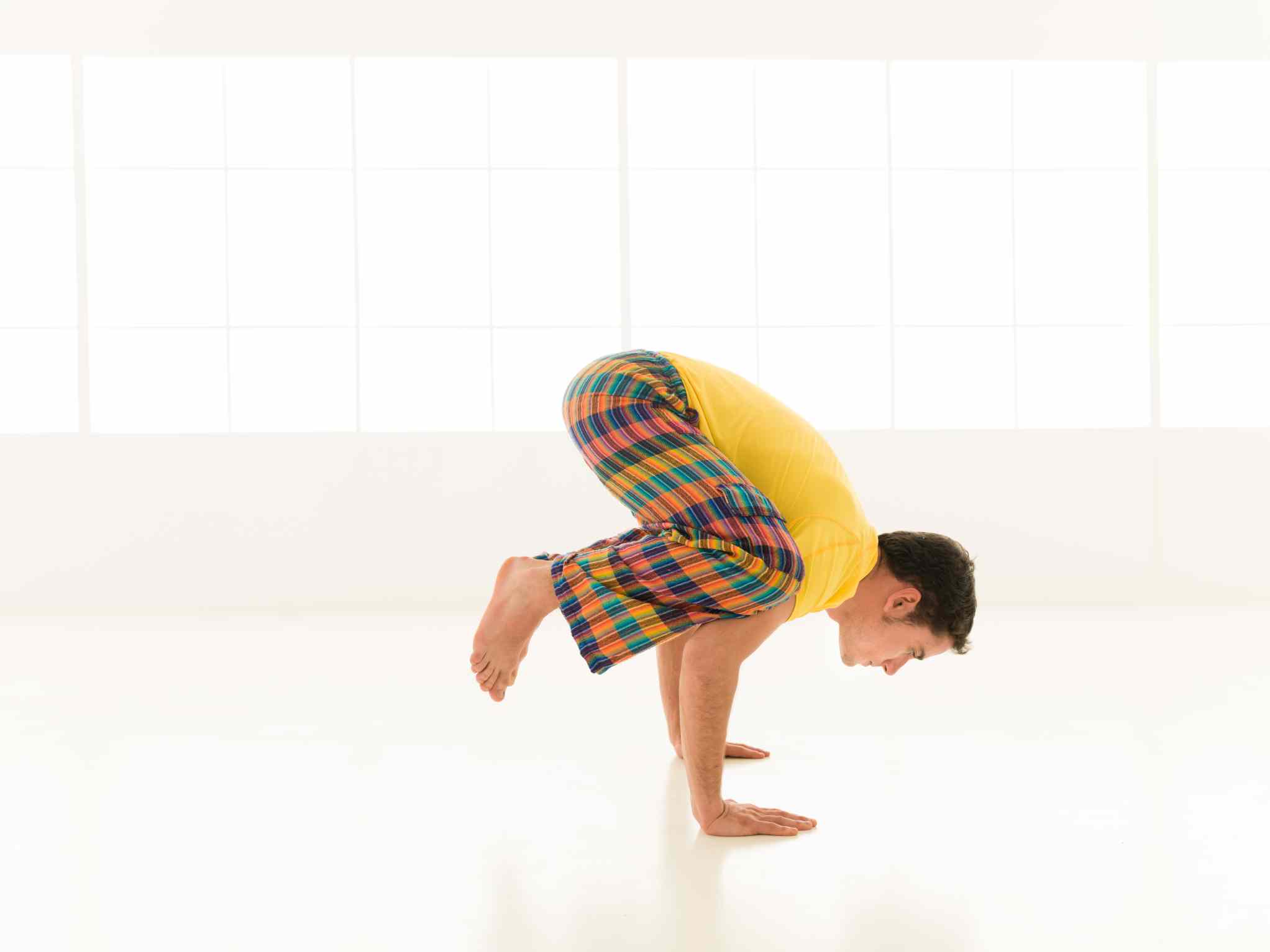
Yoga’s one-hand stand, Bakasana, symbolises power, focus, and fortitude. However fierce this posture may seem, it is dynamic and brings a manifold of health benefits beyond muscle strength. Here are several implications of practising Bakasana in yoga on your health. Bakasana is such an incredible pose that both challenges and rewards.
For instance, strengthening the core while providing upper limb power supports mental clarity and concentration. With us, explore the changes brought about by Bakasana on health irrespective of their age and levels in yogic practice.
Nevertheless, to learn more about the health benefits of Bakasana, continue reading.

Table of Contents

What is the Crane Pose of Bakasana?
Hatha and contemporary yoga include the arm-balancing posture known as Bakasana, in which the hands are on the floor, the feet are raised, and the chins are resting on the arms.
Intermediate to advanced yoga practitioners should be taught the Bakasana stance after they have mastered the Crow Pose or the Kakasana. The position works the upper back, arms, wrists, and abdominals, thus enhancing blood circulation.
How Often Can You Practise Bakasana?
Bakasana, also known as crow pose, should be practised 2-3 times a week for beginners. This allows the muscles and joints to adapt. Gradually increase it to 4-5 times weekly as you become stronger and more stable.
Hold for 5-10 seconds and gradually increase to 20-30 seconds as your stamina grows. Do 2 – 3 cycles per workout, increasing until you can handle four or five series. Remember that it’s essential that you warm up well to notice pain. Also, ensure breathing is good throughout the exercise so that Bakasana gets appropriately assimilated into your practice.
Top 11 Health Benefits of Bakasana
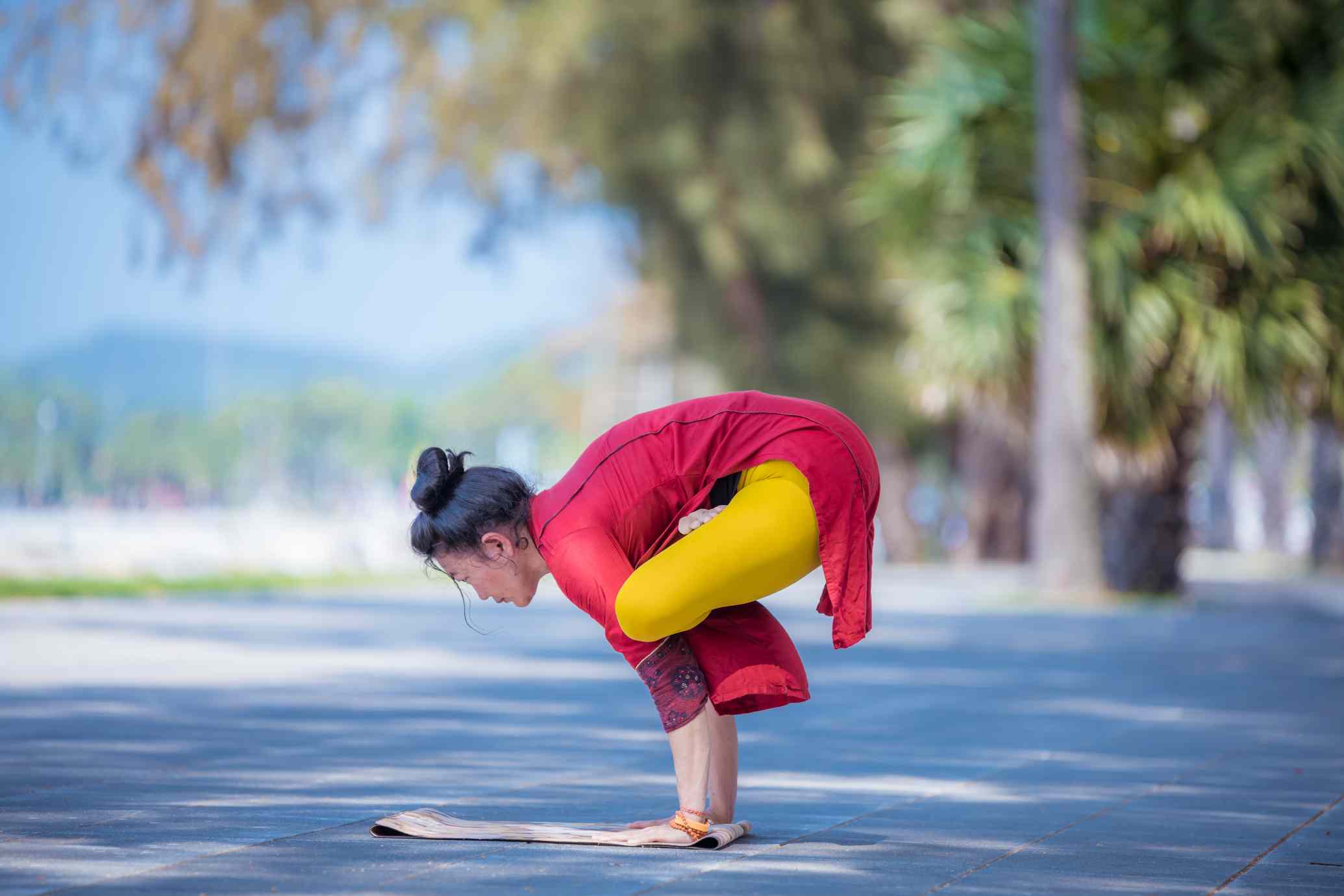
Bakasana offers a range of benefits for both your physical and mental well-being. By performing Bakasana, you can derive the following health benefits:
Physical Benefits of Doing Bakasana
1. Helps in Strengthening the Back and Abdominal Muscles:
With regular practice of Bakasana, you can keep your abdominal and back muscles healthy. This is because while practising Bakasana, our spine moves downwards, which is beneficial for reducing the hunch and squeezing the abdominal muscles. Moreover, with regular practice, one can also improve the elasticity and flexibility of the spine and reduce its stiffness, thereby reducing back pain.
2. Improves Blood Circulation:
Bakasana helps open the chest muscles, further improving blood circulation, reducing strain on the blood vessels, and preventing the formation of cholesterol and fat in the body. Improved blood circulation allows for the efficient delivery of oxygen and nutrients to cells. Thus, it quickens healing processes while improving their functioning capacity.
3. Helps in Reducing Belly Fat:
Bakasana is very helpful for the abdominal muscles and helps reduce belly fat. It creates pressure on the abdominal muscles, which helps prevent the formation of excessive fat and burn the existing fat.
4. Strengthens the Wrists, Shoulders and Forearms:
Regularly practising Bakasana will help you stretch your arms, shoulders, wrists, and muscles, which will put extra pressure on the muscles. So, the blood flow will increase in this area, and the muscles will get more nutrition and oxygen. This will help them strengthen and prevent wrists, muscles, forearms and shoulder injuries.
5. Improves Core Strength:
Bakasana is excellent for building core strength. The balancing act required in this pose forces the engagement of your abdominal muscles, helping to tone and strengthen the core region. This improves stability in other yoga poses and enhances overall physical performance.
6. Hip Flexor Strengthening:
Bakasana also helps strengthen the hip flexors. These muscles are engaged and strengthened as you lift your body and maintain the pose. Strong hip flexors support better posture, enhance athletic performance, and reduce the risk of hip-related injuries.
Mental Benefits of Doing Bakasana
7. Helps Relieve Anxiety and Stress:
Increased blood flow will help improve brain function and reduce various issues such as anxiety, headache, stress, etc. This yoga is highly recommended for students as it will help them increase their focus and concentration.
8. Increases Courage and Builds Confidence:
Mastering Bakasana can significantly boost self-confidence. Achieving this challenging pose fosters a sense of accomplishment and resilience, encouraging you to tackle other difficult tasks with a positive mindset. This increase in confidence can positively impact various aspects of your life.
9. Boosts Mental Focus and Concentration:
Holding Bakasana demands intense concentration and mental clarity. This mindfulness aspect helps quiet the mind and reduce stress, promoting calm and mental well-being. Over time, regular practice can enhance your ability to focus on tasks and improve cognitive function, contributing to better mental health and productivity.
Other Benefits
10. Improves Digestive Health:
Another advantage of Bakasana is that you can improve your digestive health by practising it daily, preventing digestive issues like constipation. This is because it will create a lot of pressure on the inner intestine and the stomach.
11. Enhances Sexual Health:
Bakasana is beneficial for enhancing your sexual health as this yoga requires you to squeeze your sexual organs. It will help produce stress hormones, which will stimulate your sexual organs. In addition, it also improves the blood flow to the sexual organ, which will further enhance your sexual performance.
Types of Bakasana
Bakasana, also known as the crane pose in yoga, is an important arm balance pose with many benefits. While the traditional Bakasana pose is familiar, other interesting ones can add more difficulty to your practice and offer some extra advantages.
1. Classic Bakasana (Crane Pose)

The classical Bakasana involves you balancing on your hands, with your knees placed on your upper arms and feet not touching the ground. The emphasis is on building arm strength, core stability, and balance.
2. Parsava Bakasana
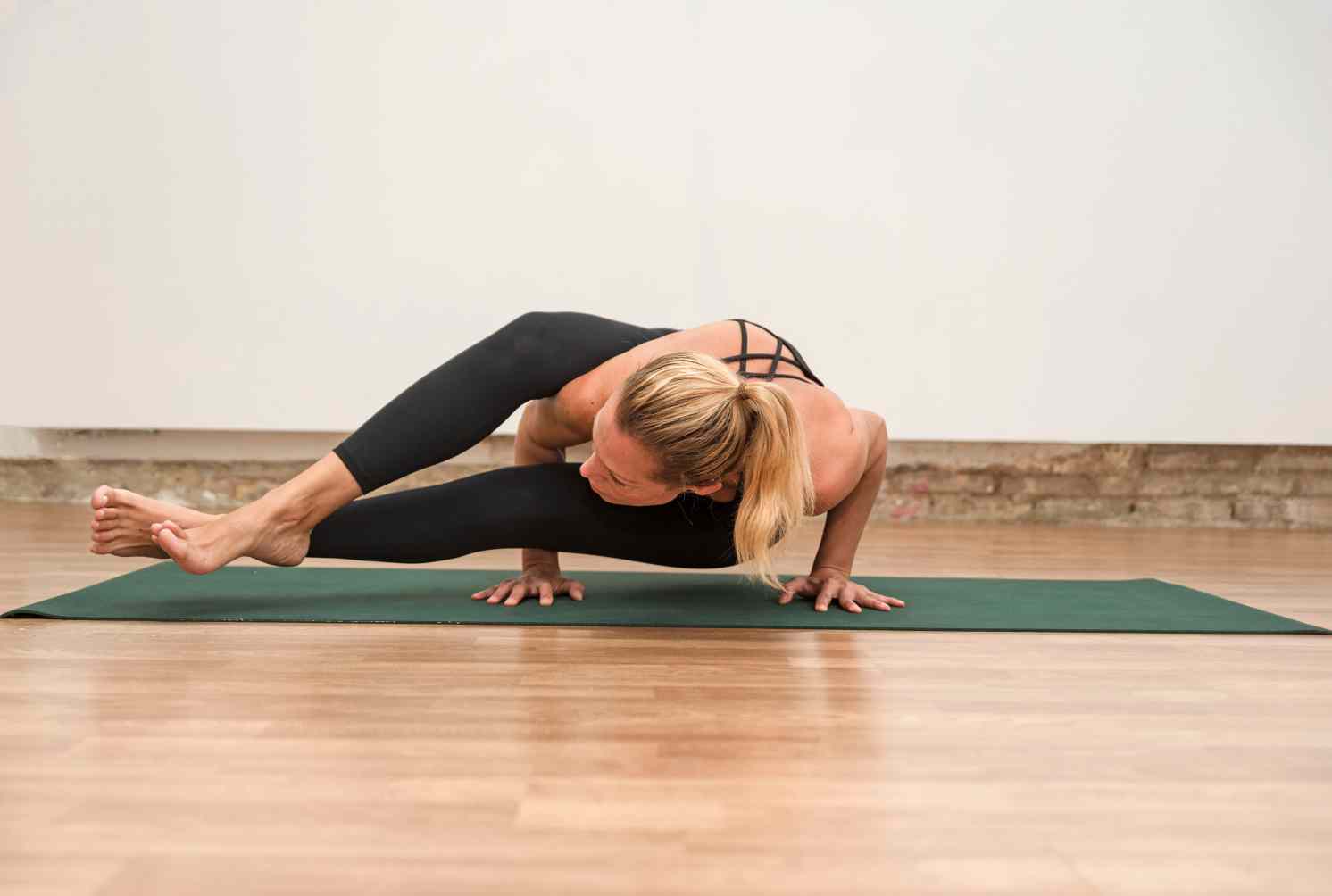
From another perspective, one may twist their torso when trying this variation; they’ll end up standing upright with both knees supported by one upper arm. This position gives us more intensified abdominal exercise and better backbones and lateral midsection flexibility.
3. Eka Pada Bakasana (One-Legged Crane Pose)
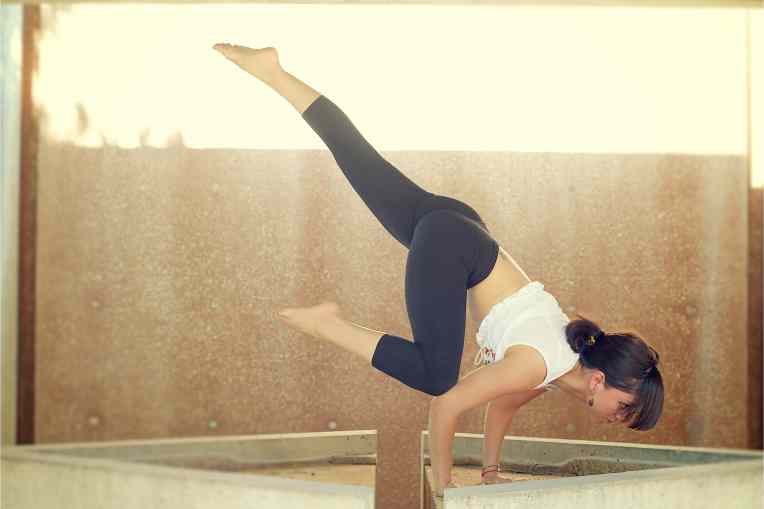
In this advanced version, one leg remains in the regular Bakasana position while the other stretches straight back. It requires higher levels of balance along with increased core strength and coordination.
4. Double Knee Bakasana
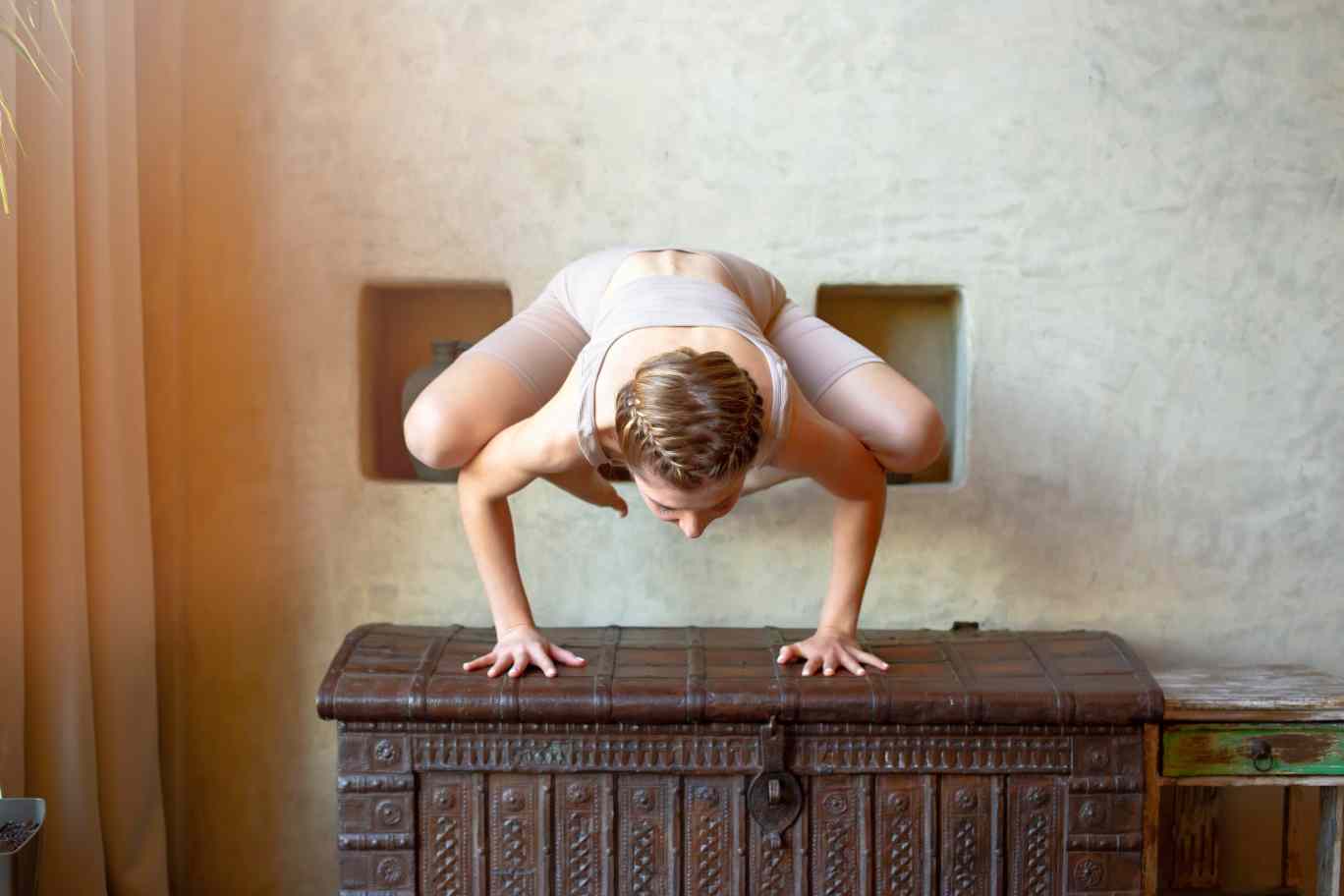
In this variation, both knees lifted off their upper arms come together in mid-air while hands support body weight. To perform this pose, you will need significantly developed core muscles and powerful arms, an advanced Bakasana form.
How to Perform the Bakasana?
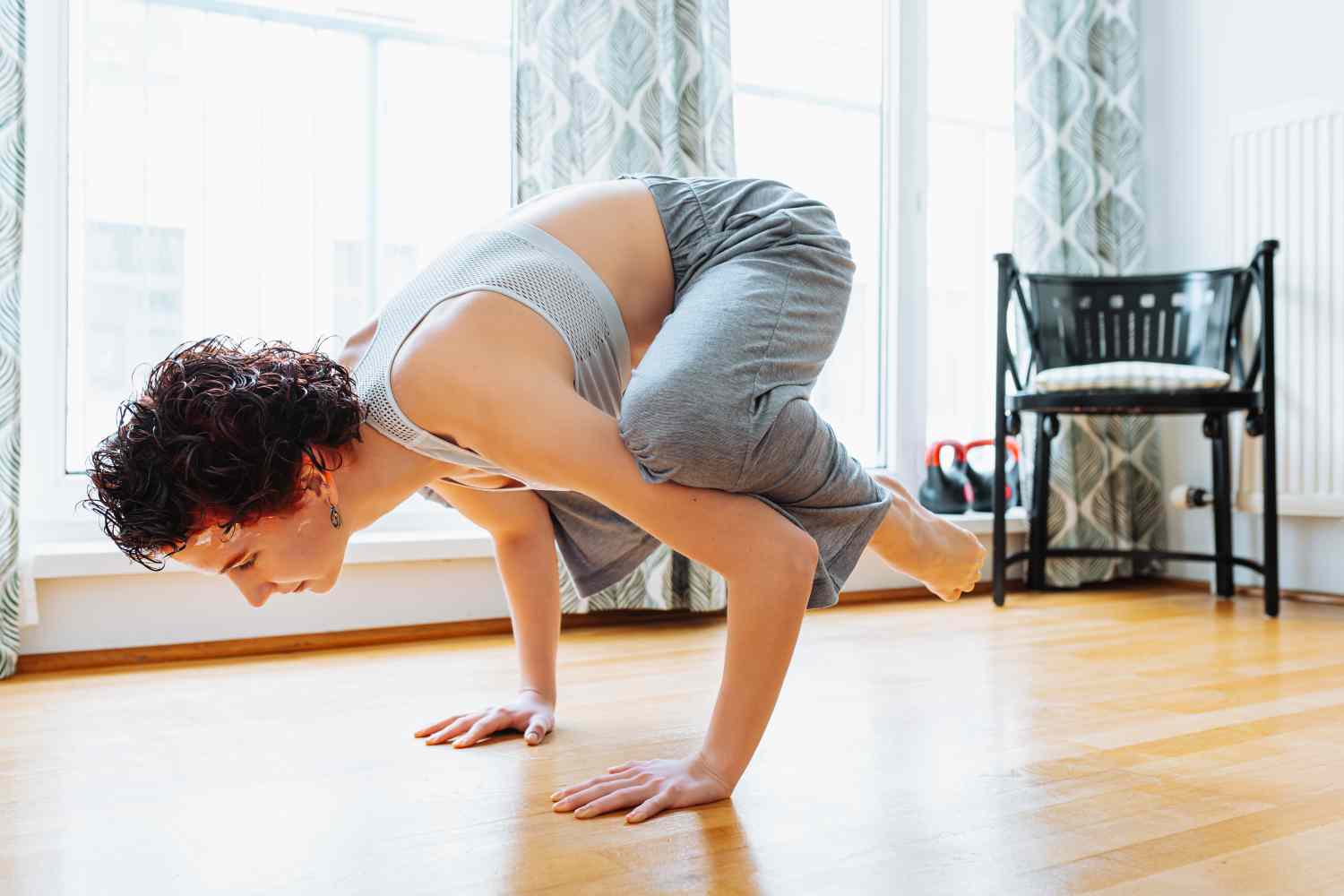
To begin performing the Bakasana, you must start by standing in a Tadasana or Mountain pose, keeping your arms at your sides. Remember to breathe steadily while performing this pose.
Step 1: Bend your knees slightly, keeping your palms flat on the floor and your feet shoulder-distance apart.
Step 2: Place your palms on the mat a foot or so in front of your feet. Press firmly against each finger's top joint while spreading your fingers widely.
Step 3: In a low plank posture (Chaturanga Dandasana), your elbows should be bent straight back and your head in the same direction, but you should not fully bend your arms.
Step 4: Open your knees so they are parallel to your upper arms and rise onto the balls of your feet.
Step 5: Place your knees on the backs of your upper arms.
Step 6: Move your weight into your hands and lift your head as you go forward.
Step 7: Step one foot off the ground, then the other, and stand up on your tiptoes.
Step 8: Keep the knees on the arms and use the inner thighs for support.
Step 9: Push your butt up to your feet.
Step 10: Pay attention to how your body feels as it lifts. Avoid sinking into the pose, as it could cause your shoulders to sag.
Step 11: Exhale, then shift your weight until your feet are back on the ground to exit the pose.
Things Required to Practise Bakasana
Bakasana is an impressive arm balance that requires a combination of strength, balance, and focus. Here are the essentials required to practice Bakasana:
- Yoga Mat: Provides cushioning and a non-slip surface for better grip and stability.
- Comfortable Clothing: Allows freedom of movement without restrictions.
- Blocks or Props: Useful for beginners to help with balance and support during practice.
- Warm-Up Routine: Prepares the body by stretching and loosening the wrists, shoulders, and core muscles.
- Safe Space: Ensures ample room around to avoid injury in case of a fall.
- Focus and Patience: Essential for maintaining balance and gradually building the strength needed for the pose.
5 Tips for Practising Bakasana
Here are some tips you need to follow to perform Bakasana.
- Warm Up: Before trying Bakasana, warm your wrists, shoulders and hips adequately. Do poses like Downward Dog, Cat-Cow and Garland Pose to prepare your body for this arm balance.
- Go for Props: Put a cushion or block under your forehead if you struggle with balance. This will ensure that you try to lift your feet off the floor as you gain more confidence.
- Engage Naturally: A strong core is vital for Bakasana. Strengthen your core by doing plank variations and boat poses in your physical exercises.
- Learn Patience: Bakasana is all about practice and time. Celebrate small wins, don’t rush yourself and stay patient. Eventually, through regular training and persistence, slow progressions in the pose will be experienced.
- Maintain Mindfulness: When practising Bakasana, maintain a cool head. Slow, deep breathing helps quiet the mind so one can focus on balancing effectively.
Precautions and Contraindications of the Bakasana
It is crucial to remember a few aspects, as it is regarded as an advanced level pose and is classified under arm balance poses. The following are the top contraindications to be aware of:
It is advisable to avoid practising Bakasana or Crane Pose if you have any injuries to your hips, knees, wrists, or shoulders. Instead, the best action is to adjust this stance with props or support.
It is important to avoid abrupt blood surges towards the brain while leaning down to gain balance if you have migraines because it can make your head feel even heavier.
When experiencing Carpal Tunnel Syndrome, avoid this.
It is not recommended for pregnant women or women going through menstruation. The best solution would be to get guidance from professionals in this scenario.
Patients with high blood pressure will struggle to maintain equilibrium or concentration. Thus, they should avoid doing this yoga pose.
If you have spondylitis, avoid this yoga asana.
Easy Modifications of Crane Pose
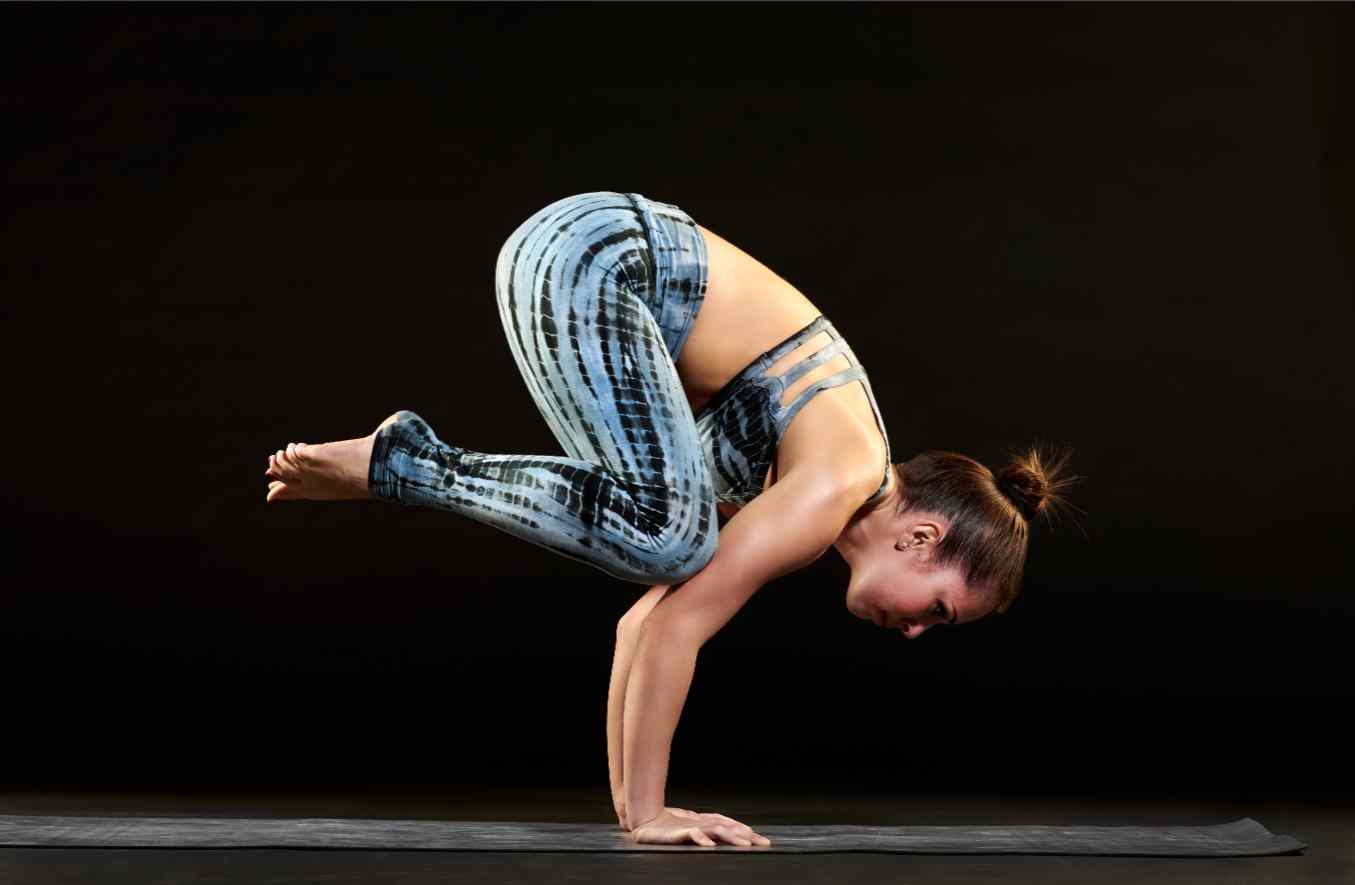
If you initially find it extremely challenging to perform crane poses, you can try these modifications.
- Blanket: Use a blanket to protect your face or forehead by laying it below you.
- Blocks: Place blocks beneath your feet to provide stability and gradually acquire the confidence to enter the posture.
- Lift Only One Leg: Lifting and practising with only one leg up for a few tries, releasing it, and then lifting and practising with the other leg can help you gradually acquire confidence in your arm strength and body stability.
- Use a Stool or Chair: An excellent starting point for practising Bakasana is to place a stool or chair of the same height behind you so your legs can rest comfortably.
Who Should Avoid Doing Bakasana?
While Bakasana offers many benefits, it's only suitable for some. Here's who should avoid Bakasana:
- People with Wrist Injuries: People with chronic wrist pain should avoid performing Bakasana, which entails roughly holding the legs with both elbows positioned on top of each other.
- Shoulder Injury: Bakasana may strain shoulder joints and muscles in those with shoulder injuries or instability. It’s best to wait until your shoulders are completely rehabilitated and strong before doing it.
- Pregnant Women: Bakasana is not recommended for pregnant women, especially in late pregnancy, as it poses a risk of imbalance and falling, which can damage both the mother and baby.
- Lower Back Pain: If you have chronic lower back pain, Bakasana may worsen it since bending forward is involved while engaging one’s core muscles. Before trying this posture, consult with a healthcare professional.
- Individuals with High Blood Pressure: Bakasana requires intense muscle engagement and balancing and could raise blood pressure. Such a pose should not be made by persons with high blood pressure, or they could talk to their doctors before performing it.
- Beginners Without Proper Guidance: Novices should only try Bakasana with proper guidance from a certified yoga instructor. Performing it incorrectly can result in injuries and sprains.
- People with Eye Conditions: People suffering from such eye conditions as glaucoma or retinal issues are advised against practising Bakasana, as the asana may also increase intraocular pressure.
- Individuals with Anxiety or Fear of Falling: If you have anxiety that is severe or are afraid of falling, it’s not a good idea to practise Bakasana if you don’t feel confident enough to perform this pose safely because stress will rise and injury may occur.
- Anyone with Recent Surgery: If you have recently had surgery, especially on your abdomen, wrist, or shoulder, avoid performing Bakasana until you are fully healed and your doctor permits you to do so.
Bakasana is an arm balance and a symbol of strength, concentration, and determination developed through yoga. Incorporating Bakasana in your practice builds up physical strength and better balance. One also becomes more focused mentally and gains clarity of mind.
Always remember that mastering Bakasana is not only about reaching its final destination but also enjoying its journey itself. Practice with patience, listen to your body, and celebrate progress.













